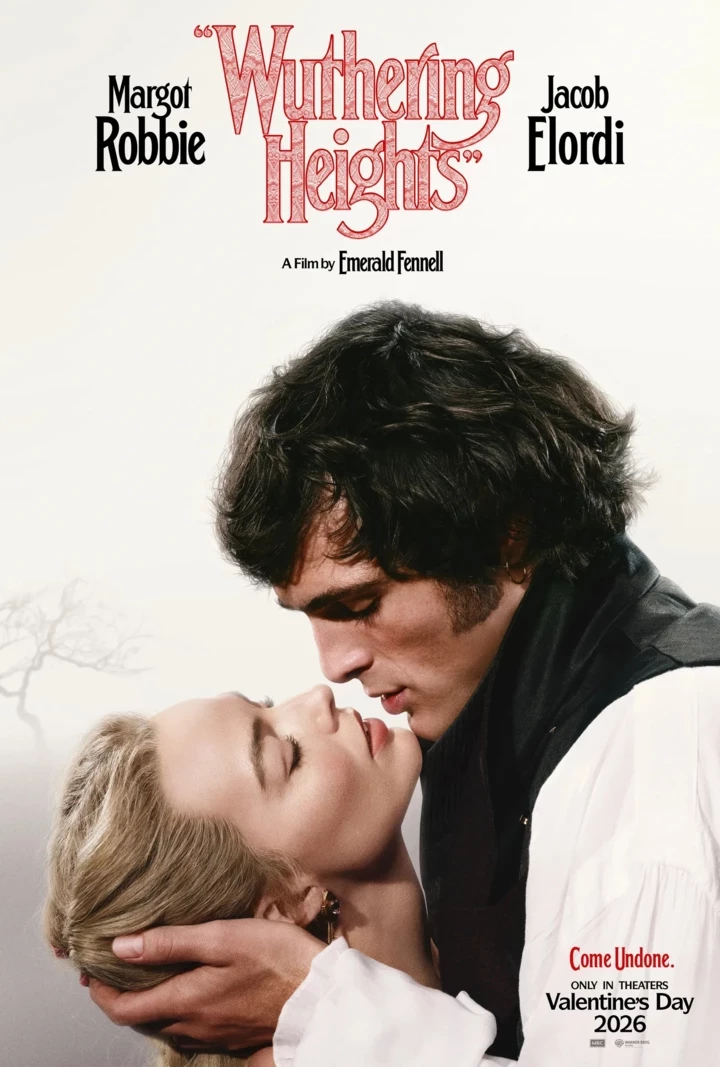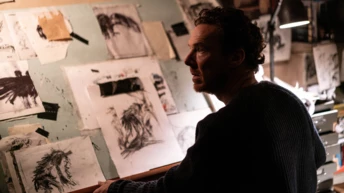
Save this storySave this storySave this storySave this storyYou’re reading Critic’s Notebook, our weekend column looking at the most interesting moments in the cultural Zeitgeist.
It’s not alive, but it’s not dead, either. It consumes a vast amount of resources. It’s mindless: what presents as its will is really a drift toward the mean, toward the unconsciousness of crowds. It will devour you, but don’t take it personally. Or maybe do. You profit-drunk, hubris-crazed humans probably brought this on yourselves.
By “it,” I naturally mean the zombie horde. 2025 has been a bacchanalia of zombies. “28 Years Later,” Danny Boyle’s second sequel to “28 Days Later,” ravaged box-office expectations for its opening weekend in June and went on to gross more than a hundred and forty million dollars globally. In the spring, a new season of the spinoff series “The Walking Dead: Dead City” premièred, and “The Last of Us” occupied HBO Max’s prime Sunday slot, reminding viewers that even megastar Pedro Pascal isn’t above a zombie-hosing gig. Also willing to parley with the undead: Seth Rogen, who brought in the aughts-era picador Johnny Knoxville for a zombie-themed episode of his comedy “The Studio.” Rogen’s character, a beleaguered Hollywood executive, is producing a film called “Duhpocalypse,” which Knoxville is headlining and which features a zombie plague spread via explosive diarrhea. This is just the mainstream stuff. For real heads, the first six months of the year also have yielded a Korean romantic drama series, “Newtopia”; a dark comedy, “Zombie Repellant”; and a bleak New Zealand indie, “Forgive Us All.”
As a symbol, zombies are malleable; you can make them stand for any variety of fear. Pose them one way and they reveal a post-COVID apprehension about disease and infection. Put on your MAGA hat and they evoke invading swarms of immigrants. As with other supernatural adversaries, they are especially good at channelling anxieties about the hazy line between self and other. A typical zombie text starts from the premise that civilization has crumbled and that survivors are desperate; often, the remnants of the social order have militarized. There’s a stock scene—it occurs over and over in the “28 Days Later” franchise—in which a character turns on their infected loved one, and the question of who our heroes have become flares as urgently as the question of what they’re fighting. Because lose-lose situations are so endemic to the genre, a hint of relief can sometimes accompany the prospect of surrender to the putrefying mob. Zombiehood offers self-loss, the end of moral choice. In an era of globalization and of populism, zombies provide a vivid metaphor for being swept away—by a political movement, or by historical forces beyond your comprehension.
Some have argued that zombies represent something more mundane. In 2010, when “The Walking Dead” first came out, Chuck Klosterman suggested that zombie plots are dependably agreeable because they illustrate how “day-to-day existence feels.” Dispatching a zombie is not difficult, he pointed out, but it is draining, especially since you have to do it again and again. (“Blast one in the brain from point-blank range . . . That’s Step 1. Step 2 is doing the same thing to the next zombie that takes its place.”) Per Klosterman, killing zombies, like replying to e-mails, is an enervating time suck, and the allure of zombie stories is that they evoke the tedium of contemporary life, which is, increasingly, the tedium of scrolling endlessly on your phone.
Zombies and scrolling—yes. The two go together: the unhurried, inevitable motion that keeps placing new posts in front of your eyeballs, and the bodies inching forward as if by the turning of a crank. The impassive march of content and the shuffling tread of death. There’s something reassuring, if also terrible, about the inexhaustibility of zombies, and of content, and of zombie content. You can outrun it but you can never run out of it. When zombies are doing their jobs, they are darkly mirroring humans, and their continuity becomes a comfort. In “Zone One,” a dystopian novel by Colson Whitehead, the protagonist, Mark Spitz, is introduced as a sweeper of abandoned buildings in zombie-infested New York City. The mostly dull work reminds Mark of his own resilience. “Everything was so boring that this could not be the first time he’d experienced it,” Whitehead writes. “A cheerful thought, in its way, given the catastrophe. We’ll be back.”
Zombies are the dumbest monsters. Despite their ineloquence, though, I’ve started to view them as messengers, warning of a societal inability to tolerate loss. The audience for 2025’s reel of zombie apocalypses lives in a world shaped, in part, by Americans’ refusal to accept an aging Joe Biden’s ineligibility for President. It’s a world in which holograms of dead or absent stars, from Whitney Houston to Roy Orbison to the seventies-era members of ABBA, sell out concert venues. The cannibalization of I.P. in endless sequels and reboots is a phenomenon that has itself been rehashed ad nauseam in essays like this one. In June, the Times magazine reported on the burgeoning field of grief tech—the companies racing to develop digital representations of the dead which bereaved friends and family members can interact with. These simulacra can take the form of “griefbots” trained on the speech and writing of the deceased. Some have video components, evoking “The Shrouds,” the recent David Cronenberg film, in which new technology affords people live feeds of their loved ones decomposing underground. As the journalist Cody Delistraty wrote, “Today’s A.I.-driven afterlife offers . . . an ongoing, interactive discussion with the dead that prevents or delays a genuine reckoning with loss.”
Online, there is already an insatiable urge to memorialize. Photographs—memories entombed and then sent flying around the web—saturate our digital lives. As with A.I., the technology seems to be accelerating us toward our own obsolescence. In “The Social Photo: On Photography and Social Media,” the critic Nathan Jurgenson writes that an intensifying drive to “embalm” experience on apps such as Instagram “kills what it attempts to save out of a fear of losing it.” When Susan Sontag wrote that “all photographs are memento mori,” she meant it literally, in some cases: an early function of photography was to preserve the likenesses of the dead, making the camera an analog piece of grief tech. But her larger point was that the frozen image often exists in opposition to the dynamic moment and to the living being.
If Silicon Valley’s wilder promises are to be entertained, our spirits may one day be able to join our effigies on the internet. In Jesse Armstrong’s film “Mountainhead,” a venture capitalist played by Steve Carrell refuses to accept his cancer diagnosis and the medical care that goes with it. He is counting on bypassing death by uploading his consciousness to the cloud. The movie is bearish on his chances, though, and implies that he’s only hastening his end by ignoring his doctors. Meanwhile, in a case of life synchronizing with art, the tech entrepreneur Bryan Johnson has pursued “anti-aging” measures—including penis shockwave therapy and plasma donations from his son—that have transformed him into a waxy, ligatured figure, like an ancient Egyptian burial doll.
We are bad at letting go. We recoil from sadness and we want to forget how to mourn. So many of our desires can be gratified, and so seamlessly, that maybe we’ve grown hypersensitive to the sensation of lack, willing to embrace any counterfeit that might insulate us. In such an environment, zombies elucidate the dangers of clinging to the past. One translation of Aaaaughhhh is “There’s a difference between not dying and being alive.” A summary of Gyyyyyuaaack might be “Things can grow so corrupted or damaged that it’s better not to have them anymore.” In this nostalgic moment, zombie stories expose a toxic side of loss aversion, cautioning us not to settle for brainless facsimiles, for shoddy reproductions, for shambling reanimated corpses of what we once loved.
If zombies were simply inferior substitutes for humans, they wouldn’t be so worrisome. But zombies are destructive, and contain within them a critique of reactionary violence. In “28 Years Later,” England has fully succumbed to a “rage virus” that turns reasonable people into homicidal psychopaths and keeps the country submerged in the dark ages. Meanwhile, the rest of the world has managed to keep the disease at bay; beyond England lies a future of dating apps and streaming services.
The film almost insists on being interpreted as a Brexit allegory. Our protagonist, a young boy named Spike, is eking out a grim pre-industrial existence with his parents and a small group of survivors on a not-so-splendidly-isolated patch of turf off the coast of Northumberland. Misty myths of old Britain shape the movie’s iconography (a digital recreation of a legendary tree; a tower of skulls that evokes the country’s Shakespearean heritage). On the soundtrack, an archival recording of a Rudyard Kipling poem is distorted to draw out the words’ hysterical quality. If, as the scholar Corey Robin has suggested, all reactionary movements have, at their heart, a fear of loss, then Boyle’s England is a conservative paradise, in which an aggrieved desire for the past manifests as a literal virus. In this reading, the infected are both Brexiters, animated by a hunger to protect and restore a world that seems to them to have slipped away, and a symbol of what comes back, deformed, as a result of the reactionary project. With respect to gender roles, for instance, the aggressive zombies incarnate a warped and rotted form of traditional masculinity, a perversion of the warrior ideal.
A virtue of Boyle’s movie—and of the zombie genre more broadly—is that it showcases what, exactly, people can become so panicked about losing. In The New York Review of Books, Ben Tarnoff used the term “reactionary infantilism” to describe President Donald Trump’s “desire to be carefree” and his “abdication of adulthood’s defining obligation: to take responsibility for oneself and others.” The infected have not, like true Burkeian conservatives, reinstated custom or ceremony; they’ve claimed a kind of license, an unshakeable self-confidence, a self-justifying power. They’ve regressed, as all zombies must, to babyhood. (I remind you that the undead’s weapon of choice in “Duhpocalypse” is explosive diarrhea.) Zombies are bottomlessly hungry, they’re preverbal, and they’re unreasoning. Revealingly, both “28 Years Later” and “The Last of Us” are structured around a young character’s coming of age; it’s no accident that “Zone One” ’s curtain opens on Mark Spitz as a kid. Zombies are what happen when a juvenile life stage is unnaturally protracted. They represent the ugliness of our attempts, as grownups, to recapture the innocent egotism of infants.
This zombie-baby parallel may explain the tenderness for the infected that occasionally pierces through the horror of “28 Years Later.” Boyle casts the zombie plot as a failed bildungsroman, a story about the parts of us that will neither mature nor die and leave us in peace. The film is permeated by pathos and a primal longing for safety. When Spike breaks free of his insular upbringing, he starts to see the infected as objects of pity rather than of revulsion. His empathy doesn’t last—the end of the film swings back to nunchuck heroics—but the critters retain an elegiac aura. If they’re warnings, they’re also embodiments of a relatable grief about being one thing and then being forced to become something else. To paraphrase the poet Louise Glück, we look at the world once, in childhood. The rest is zombies. ♦
Sourse: newyorker.com







